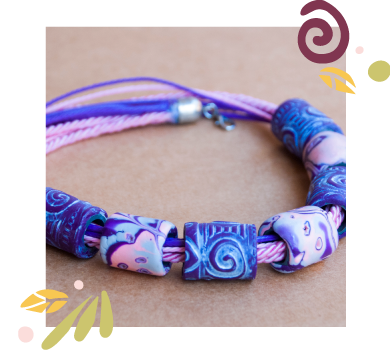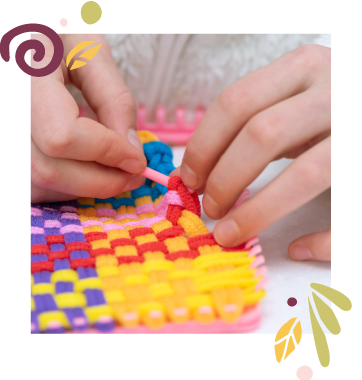Exercise
Regular exercise is often recommended for people with rheumatoid arthritis (RA) despite the challenges it can present. While it may seem counterintuitive to exercise when joints are painful and stiff, physical activity can be incredibly beneficial for managing RA symptoms and improving overall well-being.
Exercise can help strengthen muscles around the affected joints, improve joint flexibility and range of motion, enhance cardiovascular health, and promote weight management, all of which contribute to better RA management. It's crucial to choose exercises that are appropriate for your individual fitness level and joint condition.
Low-impact exercises are often recommended for people with RA, as they minimize stress on the joints. These exercises include⁚
- Swimming⁚ Swimming is an excellent exercise for people with RA because it provides a full-body workout without putting excessive stress on the joints. The buoyancy of the water supports your body, reducing joint impact.
- Cycling⁚ Cycling is another low-impact exercise that can be beneficial for people with RA. Choose a stationary bike or a comfortable bike with a wide seat and adjust the seat height for optimal comfort.
- Walking⁚ Walking is a simple and accessible exercise that can help improve cardiovascular health and strengthen lower body muscles. Start with short walks and gradually increase the distance and duration as your fitness improves.
- Yoga⁚ Yoga can improve flexibility, strength, and balance while also promoting stress reduction. Choose gentle yoga classes designed for people with arthritis or modify poses to accommodate your needs.
It's essential to listen to your body and avoid any exercises that cause pain or discomfort. Start slowly and gradually increase the intensity and duration of your workouts as your fitness improves. Consult with your doctor or a physical therapist before starting any new exercise program to ensure it is safe and appropriate for your condition.
Diet
Diet plays a crucial role in managing rheumatoid arthritis (RA) by influencing inflammation levels, overall health, and energy levels. While diet alone cannot cure RA, adopting a healthy eating pattern can significantly impact the severity of symptoms and improve overall well-being.
An anti-inflammatory diet is often recommended for people with RA, as it emphasizes foods that reduce inflammation and minimize those that contribute to it. Here are some dietary recommendations⁚
- Anti-Inflammatory Foods⁚ Focus on consuming plenty of fruits, vegetables, whole grains, nuts, seeds, and fatty fish rich in omega-3 fatty acids. These foods are rich in antioxidants, vitamins, and minerals that can combat inflammation and support overall health.
- Limit Processed Foods⁚ Minimize your intake of processed foods, sugary drinks, and refined carbohydrates, as they can contribute to inflammation and negatively impact blood sugar levels.
- Reduce Saturated and Trans Fats⁚ Limit your intake of saturated and trans fats found in red meat, butter, and fried foods, as they can contribute to inflammation and heart disease.
- Stay Hydrated⁚ Drink plenty of water throughout the day to stay hydrated and support overall health.
It's important to discuss your dietary needs with your doctor or a registered dietitian. They can provide personalized guidance based on your individual health status, preferences, and any dietary restrictions.
By adopting a healthy, anti-inflammatory diet, you can help manage RA symptoms, support your immune system, and enhance your overall health.
Weight Management
Maintaining a healthy weight is crucial for managing rheumatoid arthritis (RA) and reducing the burden on your joints. Excess weight puts extra stress on your joints, increasing pain, stiffness, and inflammation. It can also make it more difficult to perform daily activities and participate in exercise.
If you are overweight or obese, losing even a small amount of weight can significantly improve your RA symptoms and overall health. Talk to your doctor about healthy weight loss strategies, as they can help you develop a personalized plan that is safe and effective for you.
Here are some tips for managing weight with RA⁚
- Focus on a healthy diet⁚ Adopt a balanced diet rich in fruits, vegetables, whole grains, and lean protein. Limit processed foods, sugary drinks, and saturated and trans fats.
- Engage in regular exercise⁚ Exercise can help you lose weight, improve muscle strength, and enhance your overall fitness. Choose low-impact exercises that don't put excessive stress on your joints, such as swimming, cycling, or walking.
- Seek support⁚ Talk to your doctor, a registered dietitian, or a certified personal trainer for guidance and support. They can help you develop a personalized weight management plan that is safe and effective for you.
- Be patient and consistent⁚ Weight loss takes time and effort. Don't get discouraged if you don't see results immediately. Focus on making gradual, sustainable changes to your diet and exercise habits.
By managing your weight, you can help reduce the strain on your joints, improve your mobility, and enhance your overall quality of life.
Stress Management
Stress can have a significant impact on rheumatoid arthritis (RA), worsening symptoms and making it more challenging to manage the condition. When you're stressed, your body releases hormones that can trigger inflammation, which can exacerbate RA pain, stiffness, and fatigue.
Stress management is an essential component of managing RA. By finding healthy ways to cope with stress, you can help reduce inflammation, improve your mood, and enhance your overall well-being.
Here are some stress management techniques that may be helpful for people with RA⁚
- Exercise⁚ Regular physical activity can release endorphins, which have mood-boosting effects and can help reduce stress levels. Choose low-impact exercises that are gentle on your joints, such as swimming, cycling, or walking.
- Meditation⁚ Meditation can help calm the mind and reduce stress hormones. There are many guided meditation apps and resources available online.
- Yoga⁚ Yoga combines physical poses with deep breathing and mindfulness, making it an excellent stress management technique. Choose gentle yoga classes designed for people with arthritis or modify poses to accommodate your needs.
- Spending Time in Nature⁚ Spending time in nature, such as walking in a park or sitting by a lake, can have a calming effect and help reduce stress levels.
- Deep Breathing Exercises⁚ Deep breathing exercises can help slow your heart rate, lower blood pressure, and reduce stress.
- Progressive Muscle Relaxation⁚ This technique involves tensing and relaxing different muscle groups in your body to relieve tension and promote relaxation.
If you're struggling to manage stress on your own, talk to your doctor or a therapist. They can provide you with additional guidance and support.
Complementary and Alternative Therapies
Complementary and alternative therapies (CAM) are often used alongside conventional medical treatment for rheumatoid arthritis (RA) to help manage symptoms, improve quality of life, and promote overall well-being. While research on the effectiveness of many CAM therapies for RA is still ongoing, some approaches have shown promise in alleviating pain, reducing inflammation, and enhancing mood.
It's important to discuss any CAM therapies you are considering with your doctor to ensure they are safe and appropriate for you. They can help you weigh the potential benefits and risks and determine if CAM therapies are a good fit for your treatment plan.
Some common CAM therapies used for RA include⁚
- Acupuncture⁚ Acupuncture involves inserting thin needles into specific points on the body. It is believed to stimulate the body's natural healing mechanisms and reduce pain and inflammation.
- Massage Therapy⁚ Massage therapy can help reduce muscle tension, improve circulation, and promote relaxation.
- Yoga and Tai Chi⁚ These mind-body practices can improve flexibility, strength, balance, and stress reduction.
- Dietary Supplements⁚ Some dietary supplements, such as omega-3 fatty acids, curcumin, and glucosamine, have been suggested to have anti-inflammatory effects. However, it's important to talk to your doctor before taking any supplements, as they may interact with your medications or have potential side effects.
While some CAM therapies may provide relief from RA symptoms, they should not replace conventional medical treatment. It's essential to work closely with your doctor to develop a comprehensive treatment plan that addresses your individual needs.
Living with Rheumatoid Arthritis
Living with rheumatoid arthritis (RA) can be challenging, but with the right approach, you can manage your symptoms, maintain your independence, and enjoy a fulfilling life. It's important to remember that you're not alone in this journey. There are many resources available to help you cope with the physical and emotional aspects of RA.
Here are some strategies for living well with RA⁚
Managing Pain and Stiffness
Pain and stiffness are common symptoms of RA. It's important to find ways to manage these symptoms effectively. Work closely with your doctor to develop a treatment plan that addresses your specific needs. This may include medication, physical therapy, occupational therapy, and lifestyle modifications.
Maintaining Mobility
Maintaining mobility is essential for preserving your independence and quality of life. Regular exercise, physical therapy, and assistive devices can help you stay active and maintain your joint function.
Protecting Joints
Protecting your joints is crucial for preventing further damage. Avoid activities that put excessive stress on your joints, use assistive devices when needed, and practice good posture.
Managing Pain and Stiffness
Pain and stiffness are common and often debilitating symptoms of rheumatoid arthritis (RA), significantly impacting daily life. Managing these symptoms effectively is essential for maintaining quality of life and promoting overall well-being.
Here are some strategies for managing pain and stiffness in RA⁚
- Medication⁚ Pain relievers, such as over-the-counter medications (acetaminophen, ibuprofen, naproxen) or prescription medications (opioids, NSAIDs), can help reduce pain. Disease-modifying antirheumatic drugs (DMARDs) and biologics work to reduce inflammation and slow down disease progression, which can also alleviate pain and stiffness.
- Physical Therapy⁚ Physical therapists can teach you exercises to strengthen muscles, improve joint flexibility, and reduce stiffness. They can also provide manual therapy techniques, such as massage and joint mobilization, to relieve pain and improve movement.
- Heat and Cold Therapy⁚ Applying heat or cold can help manage pain and stiffness. Heat can relax muscles and increase blood flow, while cold can reduce inflammation and numb pain.
- Rest and Activity Modification⁚ Rest is important for reducing inflammation and pain, but prolonged inactivity can lead to stiffness and muscle weakness. It's essential to find a balance between rest and activity, gradually increasing your activity level as your symptoms improve.
- Lifestyle Modifications⁚ Maintaining a healthy weight, eating an anti-inflammatory diet, and managing stress can also help reduce pain and stiffness.
It's important to work closely with your doctor to develop a pain management plan that addresses your individual needs. Don't hesitate to discuss your pain and stiffness with your doctor, as they can help you find the most effective ways to manage these symptoms.
Maintaining Mobility
Maintaining mobility is a crucial aspect of managing rheumatoid arthritis (RA) and preserving your independence and quality of life. While RA can affect joint movement and cause pain and stiffness, there are strategies to help you stay active, maintain your functional abilities, and participate in activities you enjoy.
Here are some approaches to help you maintain mobility with RA⁚
- Regular Exercise⁚ Engaging in regular physical activity is essential for maintaining muscle strength, flexibility, and range of motion, all of which contribute to better mobility. Choose low-impact exercises that don't put excessive stress on your joints, such as swimming, cycling, or walking.
- Physical Therapy⁚ Physical therapists are trained to develop personalized exercise programs that address your specific needs and goals. They can teach you exercises to strengthen muscles, improve joint flexibility, and enhance balance and coordination.
- Assistive Devices⁚ Assistive devices can help you perform daily tasks and maintain mobility even when joint pain and stiffness make it challenging. These devices can include canes, walkers, splints, braces, adaptive utensils, and other aids.
- Adaptive Techniques⁚ Occupational therapists can teach you adaptive techniques to make it easier to perform everyday tasks, such as one-handed techniques for dressing, bathing, and cooking.
- Environmental Modifications⁚ Make adjustments to your home environment to make it easier to move around, such as installing grab bars in the bathroom, using raised toilet seats, and creating a clutter-free space.
It's important to be consistent with your exercise program, use assistive devices as needed, and make necessary environmental modifications to maintain your mobility. Work closely with your healthcare team, including your doctor, physical therapist, and occupational therapist, to develop a personalized plan that helps you stay active and maintain your independence.
Protecting Joints
Protecting your joints is crucial for managing rheumatoid arthritis (RA) and preventing further damage. While RA can cause inflammation and pain that make it difficult to move, there are strategies you can adopt to minimize stress on your joints and preserve their function.
Here are some tips for protecting your joints⁚
- Avoid Overexertion⁚ Be mindful of activities that put excessive stress on your joints, especially during flare-ups. If you're feeling pain or stiffness, rest your joints and avoid activities that make them worse.
- Use Assistive Devices⁚ Use assistive devices, such as canes, walkers, splints, or braces, to support your joints and reduce strain.
- Practice Good Posture⁚ Maintain good posture to distribute your weight evenly and reduce stress on your joints.
- Warm Up Before Exercise⁚ Always warm up before exercising to prepare your muscles and joints for activity.
- Cool Down After Exercise⁚ Cool down after exercise to allow your muscles to relax and prevent stiffness.
- Avoid Prolonged Standing or Sitting⁚ Change positions frequently to avoid putting excessive strain on your joints.
- Modify Tasks⁚ If certain tasks are causing pain or discomfort, try to modify them to make them easier on your joints. For example, use tools with larger handles or break tasks into smaller steps.
It's important to listen to your body and pay attention to any signs of pain or discomfort. If you're experiencing pain, stop the activity and rest your joints. Work closely with your doctor and physical therapist to develop a personalized plan for protecting your joints and maintaining your mobility.
Emotional Well-being
Living with rheumatoid arthritis (RA) can be emotionally challenging. The chronic pain, stiffness, and fatigue can take a toll on your mood and overall well-being. It's important to prioritize your emotional health alongside your physical health.
Here are some tips for managing your emotional well-being with RA⁚
- Acknowledge Your Feelings⁚ It's okay to feel frustrated, angry, sad, or overwhelmed at times. Don't try to suppress your emotions. Acknowledge them and allow yourself to feel them.
- Talk to Someone⁚ Share your feelings with a trusted friend, family member, therapist, or support group. Talking about your experiences can help you process your emotions and feel less alone.
- Practice Self-Care⁚ Engage in activities that bring you joy and help you relax, such as reading, listening to music, spending time in nature, or pursuing hobbies.
- Set Realistic Goals⁚ Don't try to do too much too soon. Set small, achievable goals for yourself and celebrate your successes.
- Focus on the Positive⁚ Despite the challenges of RA, there are still many things to be grateful for. Focus on the positive aspects of your life and appreciate the good things you have.
- Seek Professional Help⁚ If you're struggling to cope with the emotional impact of RA, don't hesitate to seek professional help from a therapist or counselor. They can provide you with tools and strategies for managing stress, anxiety, and depression.
Remember that taking care of your emotional well-being is just as important as taking care of your physical health. By prioritizing your emotional health, you can improve your overall quality of life and cope with the challenges of living with RA.
Support Groups
Support groups can be invaluable resources for people living with rheumatoid arthritis (RA). They provide a safe and understanding space where you can connect with others who are going through similar experiences. Support groups offer a sense of community, shared understanding, and practical advice that can be incredibly helpful in managing the challenges of RA.
Here are some benefits of joining a support group⁚
- Sharing Experiences⁚ Support groups provide an opportunity to share your experiences with others who understand what you're going through. Hearing about others' journeys can help you feel less alone and validated in your experiences.
- Practical Advice⁚ Support group members can share tips and strategies for managing RA symptoms, coping with daily challenges, and navigating the healthcare system.
- Emotional Support⁚ Support groups offer a safe space to express your feelings, vent your frustrations, and receive emotional support from others who understand your struggles.
- Sense of Community⁚ Support groups provide a sense of community and belonging, connecting you with others who share your diagnosis. This can help reduce feelings of isolation and loneliness.
- Increased Knowledge⁚ Support groups often feature guest speakers or educational sessions on topics related to RA, such as treatment options, lifestyle modifications, and coping strategies.
If you're interested in joining a support group, ask your doctor for recommendations or search online for groups in your area. You can also contact organizations like the Arthritis Foundation or the Rheumatoid Arthritis Foundation for support group information.
Complications of Rheumatoid Arthritis
While effective treatments are available to manage rheumatoid arthritis (RA), the chronic inflammation associated with the disease can lead to various complications if left uncontrolled. These complications can affect various organs and systems, impacting overall health and quality of life.
It's crucial to work closely with your doctor to manage RA effectively and prevent or minimize the risk of complications. Early diagnosis, consistent treatment, and a proactive approach to managing your health can help reduce the likelihood of complications.
Joint Damage
Joint damage is a common complication of RA. Chronic inflammation can damage the cartilage, the smooth tissue that cushions the ends of bones, and erode the bone itself. This damage can lead to joint pain, stiffness, swelling, and limited mobility. In severe cases, joint damage can lead to deformities and disability.
Cardiovascular Disease
People with RA have an increased risk of cardiovascular disease, such as heart attacks and strokes. This increased risk is likely due to the chronic inflammation associated with RA, which can damage blood vessels and increase the risk of blood clots.
Lung Disease
RA can affect the lungs, leading to inflammation of the lining of the lungs (pleuritis), fluid buildup around the lungs (pleural effusion), or even lung scarring (pulmonary fibrosis).
Eye Problems
RA can affect the eyes, leading to dryness, inflammation, and even damage to the cornea (the clear outer layer of the eye).
If you notice any unusual symptoms, such as chest pain, shortness of breath, vision changes, or other concerning signs, it's essential to consult with your doctor promptly. Early detection and treatment can help prevent or minimize the severity of complications.
Joint Damage
Joint damage is a significant complication of rheumatoid arthritis (RA) that can significantly impact mobility, functionality, and quality of life. The chronic inflammation characteristic of RA can gradually erode cartilage, the smooth tissue that cushions the ends of bones, leading to pain, stiffness, and reduced joint movement.
The inflammatory process can also damage the bone itself, causing erosion and thinning. Over time, this damage can lead to joint instability, deformities, and limited range of motion. The severity of joint damage can vary greatly from person to person, depending on factors such as the severity of RA, the duration of the disease, and the effectiveness of treatment.
Early diagnosis and treatment are crucial for minimizing joint damage. Medications like disease-modifying antirheumatic drugs (DMARDs) and biologics work to suppress inflammation and slow down disease progression, reducing the risk of joint damage.
Protecting your joints is also essential. Avoid activities that put excessive stress on your joints, use assistive devices when needed, and practice good posture. Regular exercise can help maintain muscle strength and flexibility, supporting joint function and reducing strain.
If you're concerned about joint damage, discuss your concerns with your doctor. They can monitor your progress, assess the extent of any damage, and recommend appropriate treatment options to minimize further damage.
stromectol dosage chart in pounds
People with rheumatoid arthritis (RA) have an increased risk of developing cardiovascular disease (CVD), including heart attacks and strokes. This increased risk is likely due to the chronic inflammation associated with RA, which can damage blood vessels and increase the risk of blood clots.
The chronic inflammation in RA can contribute to atherosclerosis, a condition where plaque builds up in the arteries, narrowing them and restricting blood flow. This can increase the risk of heart attacks and strokes.
RA can also increase the risk of blood clots, which can lead to deep vein thrombosis (DVT) or pulmonary embolism (PE). DVT is a blood clot that forms in a deep vein, usually in the legs. PE occurs when a blood clot travels from the legs to the lungs, blocking blood flow.
It's crucial for people with RA to take steps to reduce their risk of CVD; This includes⁚
- Managing RA⁚ Effectively controlling RA inflammation can help reduce the risk of CVD. Work closely with your doctor to manage your RA and ensure your treatment plan is appropriate.
- Healthy Lifestyle⁚ Adopt a healthy lifestyle that includes a balanced diet, regular exercise, and maintaining a healthy weight.
- Quit Smoking⁚ Smoking significantly increases the risk of CVD.
- Control Blood Pressure⁚ High blood pressure is a major risk factor for CVD. Work with your doctor to manage your blood pressure.
- Control Cholesterol⁚ High cholesterol levels can contribute to atherosclerosis. Work with your doctor to manage your cholesterol levels.
If you have RA, it's essential to talk to your doctor about your risk of CVD and how to reduce it. Regular checkups, including blood pressure and cholesterol screenings, can help monitor your cardiovascular health.
Lung Disease
While rheumatoid arthritis (RA) primarily affects the joints, the chronic inflammation associated with the disease can also impact the lungs, leading to various lung complications. These complications can range from mild to severe and can significantly affect breathing and overall health.
Some common lung complications of RA include⁚
- Pleuritis⁚ This condition involves inflammation of the pleura, the lining of the lungs. It can cause sharp chest pain, especially when breathing deeply or coughing.
- Pleural Effusion⁚ This refers to fluid buildup in the space between the lungs and the chest wall (pleural space). It can cause shortness of breath, chest pain, and a cough.
- Interstitial Lung Disease⁚ This group of lung diseases involves inflammation and scarring of the lung tissue. It can cause shortness of breath, cough, and fatigue.
- Pulmonary Arterial Hypertension⁚ This condition involves high blood pressure in the arteries of the lungs. It can cause shortness of breath, fatigue, and chest pain.
If you have RA and experience any respiratory symptoms, such as shortness of breath, chest pain, cough, or fatigue, it's essential to see your doctor promptly. Early diagnosis and treatment can help prevent or minimize the severity of lung complications.
Managing your RA effectively can help reduce the risk of lung complications. Work closely with your doctor to control inflammation and ensure your treatment plan is appropriate.
Eye Problems
Rheumatoid arthritis (RA) can affect the eyes, leading to a range of eye problems. While eye involvement is less common than joint involvement, it can significantly impact vision and overall quality of life.
Some common eye complications of RA include⁚
- Dry Eyes⁚ Dry eyes occur when the eyes don't produce enough lubrication. This can cause irritation, burning, and blurry vision. Dry eyes are a common symptom of Sjögren's syndrome, an autoimmune disease that often occurs alongside RA.
- Uveitis⁚ This condition involves inflammation of the uvea, the middle layer of the eye. It can cause pain, redness, blurred vision, and sensitivity to light.
- Scleritis⁚ This condition involves inflammation of the sclera, the white outer layer of the eye. It can cause pain, redness, and blurred vision.
- Episcleritis⁚ This condition involves inflammation of the episclera, the thin layer of tissue that lies between the sclera and the conjunctiva (the clear membrane that covers the white part of the eye). It can cause redness, pain, and a feeling of grittiness in the eye.
If you have RA and experience any eye problems, such as dryness, pain, redness, blurred vision, or sensitivity to light, it's essential to see an ophthalmologist (eye doctor) promptly. Early diagnosis and treatment can help prevent or minimize the severity of eye complications.
Managing your RA effectively can help reduce the risk of eye complications. Work closely with your doctor and ophthalmologist to control inflammation and ensure your treatment plan is appropriate.
Prognosis of Rheumatoid Arthritis
The prognosis for rheumatoid arthritis (RA) varies from person to person, and it depends on several factors. With early diagnosis, effective treatment, and a proactive approach to managing your health, you can significantly improve your long-term outlook and reduce the risk of complications.
Factors Influencing Prognosis
Here are some factors that can influence the prognosis of RA⁚
- Severity of RA⁚ The severity of RA at diagnosis can affect the prognosis. People with more severe RA may experience faster disease progression and more significant joint damage.
- Early Diagnosis and Treatment⁚ Early diagnosis and treatment are crucial for slowing down disease progression and preventing joint damage.
- Treatment Response⁚ How well you respond to treatment can also affect the prognosis. People who respond well to medication and other therapies are more likely to have a better long-term outcome.
- Lifestyle Factors⁚ Lifestyle factors, such as smoking, weight, and stress levels, can also influence the prognosis.
- Underlying Health Conditions⁚ People with other health conditions, such as diabetes or heart disease, may have a more complex prognosis.
It's important to work closely with your doctor to manage your RA effectively and minimize the risk of complications. Regular checkups and monitoring of your RA symptoms are essential for ensuring your treatment plan is appropriate and effective.
stromectol for lice how does it work
The prognosis for rheumatoid arthritis (RA) varies from person to person, and it depends on several factors. With early diagnosis, effective treatment, and a proactive approach to managing your health, you can significantly improve your long-term outlook and reduce the risk of complications.
Here are some factors that can influence the prognosis of RA⁚
- Severity of RA⁚ The severity of RA at diagnosis can affect the prognosis. People with more severe RA may experience faster disease progression and more significant joint damage.
- Early Diagnosis and Treatment⁚ Early diagnosis and treatment are crucial for slowing down disease progression and preventing joint damage.
- Treatment Response⁚ How well you respond to treatment can also affect the prognosis. People who respond well to medication and other therapies are more likely to have a better long-term outcome.
- Lifestyle Factors⁚ Lifestyle factors, such as smoking, weight, and stress levels, can also influence the prognosis.
- Underlying Health Conditions⁚ People with other health conditions, such as diabetes or heart disease, may have a more complex prognosis.
It's important to work closely with your doctor to manage your RA effectively and minimize the risk of complications. Regular checkups and monitoring of your RA symptoms are essential for ensuring your treatment plan is appropriate and effective.
Long-Term Outlook
The long-term outlook for rheumatoid arthritis (RA) has improved significantly in recent years thanks to advancements in treatment and management strategies. While RA is a chronic condition with no cure, with proper care and a proactive approach to managing your health, you can significantly improve your quality of life and reduce the risk of complications.
With early diagnosis and effective treatment, many people with RA can live active and fulfilling lives. Medications, such as disease-modifying antirheumatic drugs (DMARDs) and biologics, can help control inflammation, reduce pain and stiffness, and slow down disease progression.
Lifestyle modifications, such as regular exercise, a healthy diet, and stress management, can also play a crucial role in managing RA symptoms and improving overall health.
It's important to work closely with your doctor to develop a personalized treatment plan and monitor your progress. Regular checkups, including blood tests and imaging studies, can help ensure your treatment plan is appropriate and effective.
While RA can be challenging, remember that you're not alone in this journey. There are many resources available to help you manage your symptoms, maintain your independence, and enjoy a fulfilling life.










